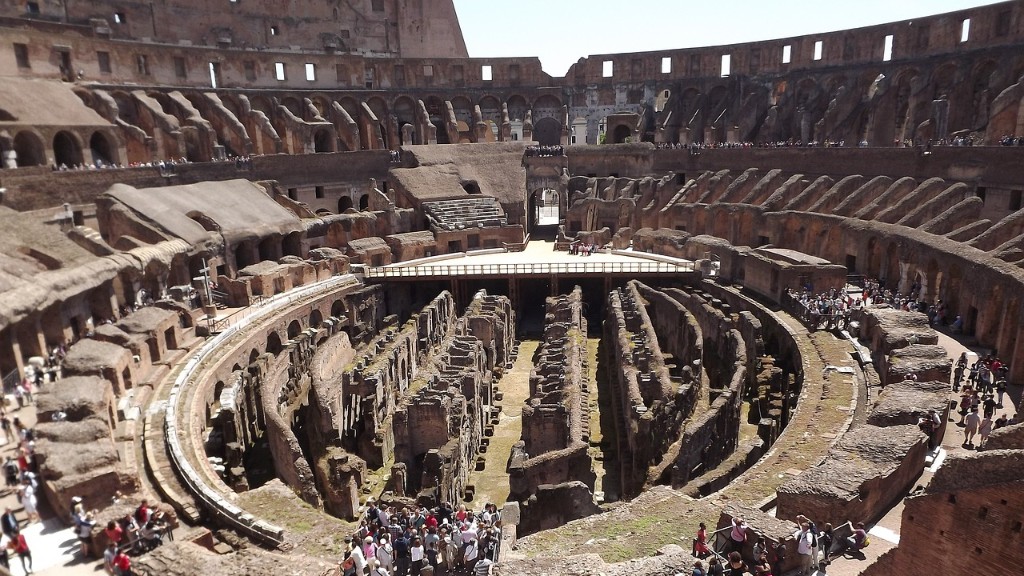The concept of mens rea, or guilty mind, is central to many legal systems. It is the idea that a person cannot be held criminally responsible for an act unless they had some level of intent or knowledge that their actions were wrong. The concept of mens rea can be traced back to the legal system of ancient Rome. Roman law was based on the principle ofactus reus, or guilty act. This meant that a person could only be guilty of a crime if their actions met the certain requirements set forth by the law. However, over time, the concept of mens rea began to be incorporated into Roman law. This was largely due to the influence of the Stoic philosophers, who believed that a person could not be held responsible for an act if they did not have the required mental state. This influence can be seen in the writings of the great Roman jurist Ulpian, who stated that a person could not be held guilty of a crime unless they had the intention to do harm. While the concept of mens rea has undergone some changes since the time of ancient Rome, it remains a central part of many legal systems today.
There is no definitive answer to this question as the concept of mens rea (or “guilty mind”) is not something that can be definitively traced to any one source or time period. However, it is generally believed that the concept of mens rea originated in ancient Rome, and that it has been a part of the legal systems of many countries ever since.
What was the legal theory of Rome?
Roman law originally adopted the principle of personality, which means that the law of the state only applied to its citizens. Foreigners had no rights and could be seized like property by any Roman unless they were protected by a treaty between their state and Rome. This principle was later changed to extend rights to foreigners, but the principle of personality is still evident in some aspects of Roman law.
The Roman Republic was founded in 509 BCE, and at first, only the upper-class patricians made the laws. However, before long, the lower-class plebeians gained this right as well. About 60 years after the founding of the Roman Republic, discontented plebeians demanded a written code of laws and legal rights. This code was known as the Twelve Tables, and it was the foundation of Roman law.
How were laws passed in ancient Rome
There were various ways that laws were implemented in ancient Rome, including by the Plebeian Council, the senate, elected officials, and the emperor. Laws were often voted on by citizens who were members of the assemblies, but this was not the only way that laws were enacted. Decrees by the senate, decisions by elected officials, and edicts by the emperor were also ways that laws were put into effect.
Roman law was one of the most influential legal systems of all time. The Twelve Tables, a primary document that compiled all Roman laws, was influential in shaping many modern legal systems, particularly in the area of stare decisis, the legal principle that a court should follow precedent. The Corpus Juris Civilis, a comprehensive compilation of Roman law, was also highly influential and helped to shape modern civil law systems.
What are 3 theories on the fall of Rome?
The Roman Empire was one of the most powerful empires in the world for centuries. However, there are a number of reasons why it ultimately fell. Political instability, economic and social problems, and a weakening of the frontier all contributed to the decline of the empire.
Political instability was a big issue. The Roman Empire was constantly changing hands, with new rulers constantly being crowned. This led to a lot of chaos and confusion, and made it difficult to maintain any sort of stability.
Economic and social problems also played a role in the fall of the Roman Empire. The economy was in decline, and there was a growing divide between the rich and the poor. This led to social unrest, which made it even harder to maintain stability.
Finally, the weakening of the frontier was also a contributing factor. The Roman Empire was no longer able to expand, and its borders were becoming increasingly vulnerable. This made it easier for enemies to invade and ultimately led to the fall of the empire.
Roman law is one of the most significant and influential legal traditions in the world. It has served as the foundation for the development of many modern legal systems, including the civil law system. The most distinctive feature of the Roman legal tradition is that its core principles are codified into a system, which serves as the primary source of law. This system of codification has played a vital role in the development and evolution of modern legal culture.
What were Rome’s first law called?
The Law of the Twelve Tables was the earliest written legislation of ancient Roman law, and was traditionally dated to 451-450 BC. The Tables were designed to codify the existing customary law of the Roman people, and to prevent the aristocracy from abusing their power. The law was written in Latin, and was posted in public places so that all citizens could read it.
The trial itself was divided into two parts. The first was a preliminary hearing held before a magistrate who decided whether there was an issue to be contested and, if so, what it was. Each step in this procedure was extremely formal. If the wrong words were used by either party, that party might lose the case.
Was there female slavery in ancient Rome
It is clear that women in Roman slavery were not treated equally to men. They were frequently separated from their children, who were commonly sold off, or ordered to look after their master’s children. This would have had a significant impact on the mental and emotional health of these women. It is appalling that their children were taken away from them and that they were not even allowed to care for them.
Whipping and fines were the most common punishments during the slave trade. Wooden shoes were sometimes placed on the feet of prisoners, making escape difficult. An enslaved person could be forced to carry a piece of wood around their neck that stated their crime.
Did Rome have strict laws?
The Roman government was very strict when it came to lawbreakers and had the right to use physical punishment on them. This was symbolized by the fasces, bundles of sticks with an ax in the center, which were carried by the important senators’ bodyguards. Crime was quite common in Rome, with the most frequent crimes being stealing, assault, and murder.
The Roman Civil Law is based on the Constitution, and Judicial Precedent is not binding in nature. The English Common Law was originated as uncodified law, though in present, it has also been codified. Judicial Precedent is binding in nature in the English Common Law.
Is American law derived from Roman law
Although roman and civil law were not received into Anglo-American law during the modern era, they did in fact exercise a significant influence on the thinking of some of the most important jurists and legal theorists of the nineteenth century in the United States and thereby, did indeed pay a significant role in the legal development of the country.
Roman law was a major influence on the development of law in the Western world. The concept of trial by jury, civil rights, contracts, personal property, legal wills, and corporations all were influenced by Roman law and the Roman way of looking at things. The Latin language spoken by the Romans spread throughout much of Western Europe during the time of the Roman Empire, and that helped to ensure that Roman law would have a lasting impact on the development of law in the West.
What are 3 ways that Rome influenced us today?
The Roman Empire was one of the most influential empires in history. Though it has been thousands of years since the empire flourished, we can still see evidence of it in our art, architecture, technology, literature, language, and law. From bridges and stadiums to books and the words we hear every day, the ancient Romans have left their mark on our world.
1. Invasions by Barbarian tribes: The Roman Empire was frequently invaded by barbarian tribes, which ultimately led to its demise.
2. Economic troubles and overreliance on slave labor: The Roman Empire was plagued by economic troubles and was heavily reliant on slave labor, which made it difficult to compete with other empires.
3. The rise of the Eastern Empire in the late third century: The Eastern Empire emerged as a powerful force in the late third century, which put pressure on the Roman Empire.
4. Overexpansion and military overspending: The Roman Empire overexpanded and spent too much on its military, which led to its financial ruin.
5. Government corruption and political instability: The Roman Empire was beset by government corruption and political instability, which made it difficult to govern.
6. The arrival of the Huns and the migration of the Barbarian tribes: The Huns arrived in the Roman Empire and the Barbarian tribes began to migrate, which put pressure on the Roman Empire.
7. Disease and famine: Disease and famine also took their toll on the Roman Empire, which contributed to its decline.
8. Ultimately, the Roman Empire fell because it was unable to compete with
What are the theories of why Rome fell
There are many reasons that have been postulated for the collapse of the Western Roman Empire. These reasons can broadly be divided into two categories: external factors, such as military threats and barbarian invasions or internal factors, such as a decline in “civic virtue” and military and economic capability. Many historians believe that it was a combination of both external and internal factors that led to the Empire’s demise.
The Roman Empire was in a state of decline in the late 4th and early 5th centuries. A combination of severe inflation, barbarian invasions, debasement of the currency, civil wars, and destruction of farms, crops and cities all forced administrators to get more taxes from people. The tax burden became so great that it ultimately contributed to the fall of the empire.
Warp Up
There is no consensus on the precise origins of the concept of mens rea, but it is generally agreed that it traces back to Ancient Rome. The Roman legal system was based on the principle of strict liability, which meant that a person could be held liable for a crime even if they did not have any criminal intent. This made it difficult to prosecute people for crimes, so the concept of mens rea was developed as a way to prove that a person had the requisite criminal intent.
There are a few schools of thought on the matter of whether mens rea can be traced back to Ancient Rome. Some believe that the concept of mens rea developed out of the Roman idea of dolus, while others argue that mens rea is a more modern concept that cannot be traced back to any one specific time period or place. However, the general consensus seems to be that mens rea is at least partially derived from Ancient Rome and the Roman idea of dolus.





